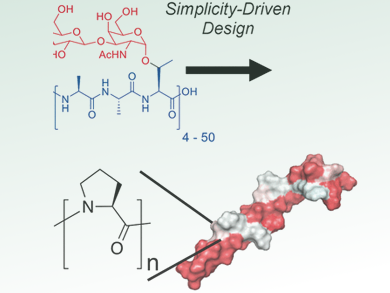Cryopreservation of Cells with Large Volumes of Dimethyl Sulfoxide
Nature has evolved sugars, amino acids, and special antifreeze proteins as cryoprotectants. People use organic solvents and synthetic polymers as additives to prevent cell cultures from freezing damage. Now, English scientists have combined both methods: They introduced polyproline, a polypeptide made of the natural amino acid proline, as an effective cryoprotectant for monolayers of cells.
The living cell is very vulnerable to freezing and thawing. Ice crystals can physically damage cell membranes and organelles, and dehydration may change the osmotic potential with severe impact on membrane and cell integrity. On the other hand, cell cultures are routinely stored in a frozen or vitrified state until they are needed in transplantation medicine or for basic research. For cryopreservation, cryoprotectants such as dimethyl sulfoxide are essential but large volumes are needed, and by far not all of the cells are recovered after thawing.
Antifreeze Glycoproteins
Nature delivers its own cryoprotectants: Organisms in ice-cold sea water produce antifreeze glycoproteins to prevent ice recrystallization. For biomedical applications, however, the availability of antifreeze glycoproteins is quite limited; besides, there is always the question of immunotolerance. Synthetic polymers have been found to be able to mimic the antifreeze activity, but a peptide-based “all-natural” polymeric backbone would be more appealing.
This bio-based approach is pursued by Matthew Gibson and his team at the University of Warwick, UK. The scientists propose polyproline, a polypeptide made only from the natural amino acid proline, as a versatile alternative cryoprotectant.
Alternative Cryoprotectant with Polypeptide Made from Natural Amino Acid
The amino acid proline is special among the natural amino acids because it cannot form hydrogen bonds to other structural parts of the peptide when integrated into a peptide. “Due to this, it is water soluble whilst being quite hydrophobic, as is the case for antifreeze protein I,” the scientists observed. They found that polyproline shares some critical surface patterns with model antifreeze proteins. This “ ‘patchy’ amphipathic structure” of polyproline, was thought to help inhibit ice recrystallization upon thawing. Moreover, the free amino acid proline, the building block of polyproline, serves as a natural cryoprotectant on its own; plant cells overproduce proline to keep their osmotic balance and protect themselves from dehydration.
The scientists then tried the proline/polyproline combination in a test system of adherent cell cultures that were subjected to freeze-thaw conditions. First, the cell monolayer was incubated in a mixture of solvent dimethyl sulfoxide and proline, then polyproline was added. Cell recovery after freezing was doubled compared with a regime having dimethyl sulfoxide as the only cryoprotectant. The scientists pointed out that their strategy could keep the solvent exposure at a minimum, thus leaving the cells in an environment as natural as possible. Although further analysis will show if all cell functions are indeed retained, synthetic polyproline has been presented here as an appealing all-natural ice recrystallization inhibitor for biological cell culture storage.
- Polyproline as a Minimal Antifreeze Protein Mimic That Enhances the Cryopreservation of Cell Monolayers,
Ben Graham, Trisha L. Bailey, Joseph R. J. Healey, Moreno Marcellini, Sylvain Deville, Matthew I. Gibson,
Angew. Chem. Int. Ed. 2017.
https://doi.org/10.1002/anie.201706703




